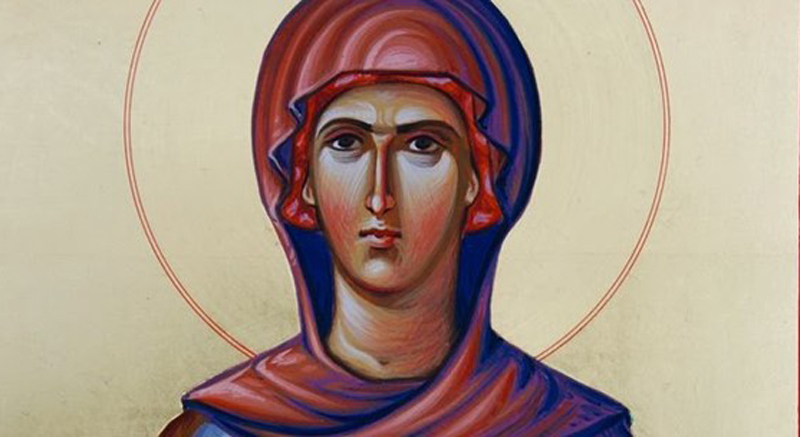(347-406)
Paula was born into the family, the gens Cornelia, who had produced more eminent statesmen than any other in Rome’s history. She married a senator, Toxotius, from whom she had five children: four girls and a boy.
Until she was 32 years old, she lived in privilege and luxury. Upon the death of her husband, Paula approached the group of widows led by St. Marcella, devoting herself with them to prayer and penance and hosting their semi-monastic order in her great Roman house on the Aventine Hill.
In 382, Marcella introduced Paula to St. Jerome, who was in Rome with Epiphanius, bishop of Salamina, and Paulinus of Antioch. Paula was deeply struck by these figures, and she housed the three pilgrims in her home. Jerome had a profound influence on Paula and was catalyst of her desire to embrace the monastic life in the East.
After the death of her daughter Blesilla in 385, Paula decided to leave for the Holy Land, accompanied by her daughter Eustochium to follow monastic life. Jerome, who had left about a month ahead of them, rejoined them at Antioch. Together they made pilgrimage to the holy places in Palestine; they then went to Egypt, in the footsteps of the hermits and cenobites, and finally settled in Bethlehem.
There they founded two monasteries, one for men and one for women. Paula was fond of fasting and performing works of charity. She even gave to the poor from the stores meant to provide for her own community’s subsistence. Jerome was a man of irascible temper, and Paula helped him, especially in his disputes with the followers of Origen, to conduct himself in their regard on the basis of humility and patience.
Paula’s most significant contributions to Jerome’s preaching are the translation of the Bible from Greek and Hebrew into Latin. She herself suggested the need for such a translation, and with her daughter Eustochium, dedicated herself to copying the work so it could be shared far and wide.
When Paula died at age 59, the monks and nuns of the two monasteries she founded, as well as many of the poor whom she had helped over the years and considered her a mother as well as a benefactor, took part in her exequies. She was buried in Bethlehem, in the church of the Nativity. Jerome dedicated the Epitaphium sanctae Paulae to her, and at his death in 419, was buried near the tombs of Paola and Eustochium.
Adapted by A. J. Valentini from: St. Paula – Information on the St. of the Day – Vatican News. (n.d.). Vatican News. Retrieved Jan. 21, 2021, from https: //www.vaticannews.va/en/saints/01/26/st–paula–roman-matron-.html
